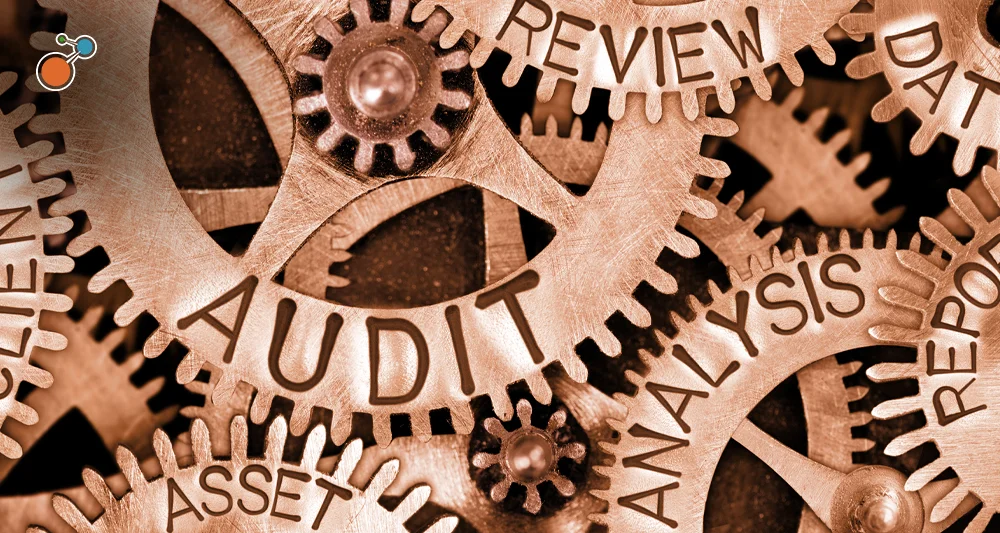You may have heard someone bring up a System and Organization Controls (SOC) report during a vendor security review, audit prep, or customer onboarding call. However, few people ask themselves who’s responsible for their company’s SOC reports or whether they’re up-to-date.
SOC reports demonstrate whether a company’s internal controls are secure and reliable. At the same time, they’re frequently misunderstood, and in some organizations, they can become an afterthought. Whether your company needs to request one, produce one, or both, you should know why they’re important – and how to make the process easier.
What Is a SOC Report?
A SOC report is an independent audit of an organization’s internal controls. It’s conducted by licensed CPAs following standards set by the American Institute of Certified Public Accountants (AICPA). These reports evaluate how secure an organization’s systems are, especially if they process sensitive data or impact customer operations.
The goal of SOC reports is to build trust; A SOC report offers independent validation that your internal controls aren’t just on paper, and they’re working as intended. Whether you’re being asked for a SOC report or needing one from a vendor, this report can play a central role in proving your company is trustworthy.
Why SOC Reports Matter
SOC reports can play a major part in building trust in your business. They build this trust by:
- Demonstrating credibility:A SOC report shows that your internal controls have been independently reviewed and validated.
- Accelerating sales and partnerships:Having a current SOC 2 Type II can speed up procurement processes and build confidence with enterprise clients.
- Supporting regulatory compliance:In industries with strict oversight, SOC reports help fulfill due diligence and audit requirements.
- Reducing risk:Whether you’re relying on a vendor or offering services yourself, SOC reports help you identify potential control failures before they become problems.
I Need a SOC Report – Now What?
SOC audits require planning and intentional ownership; They don’t just happen automatically. In fact, many companies don’t realize they need one until a major client asks. Depending on the business, responsibility for requesting a SOC audit from a CPA firm may lie with heads of security, compliance officers, controllers, or legal teams.
If you’re on the other side, evaluating SOC reports from vendors, it’s just as common to lose track of them or whether you’ve received them. Reports can easily get emailed around, stored, and quietly expire without triggering a review. Accountability for ensuring that a company’s vendors have up-to-date SOC reports normally falls on third-party risk management teams, compliance officers, or security teams.
SOC 1 vs. SOC 2 vs. SOC 3 – And Type I vs. Type II
Some may get confused by SOC reports because they have two dimensions: what’s being audited and how the audit is being performed. The audit itself is described as SOC 1, 2, 3, or most recently, SOC for Cybersecurity, and Types I and II describe how the SOC audit was performed.
What Was Audited
- SOC 1evaluates controls that affect a client’s financial reporting, like payroll services and transaction systems.
- SOC 2focuses on technology and operational controls, assessing five Trust Services Criteria: Security, availability, processing integrity, confidentiality, and privacy.
- SOC 3is a high-level, public-facing version of a SOC 2 – light on detail but useful for marketing purposes.
- SOC for Cybersecurity provides a newer, broader framework, designed to evaluate a company’s overall cybersecurity risk management, rather than just one of its products or services.
How the Audit Was Performed
- Type Ireports assess whether controls are designed effectively at a specific point in time.
- Type IIreports assess whether those controls are operating effectively over time – usually over a period of six months to one year.
For example, when you hear someone ask for a SOC 2 Type II, they’re looking for proof that your product’s technology controls are solid, as well as whether they’ve worked over a sustained period.
SOC 2 Type II: The Gold Standard
SOC 2 Type II has quickly become the most widely requested report, and enterprise clients will expect that you can produce one. This popularity can be attributed to a few factors. First, SOC 2 Type II is relevant to a broad range of organizations, especially SaaS companies, cloud platforms, and service providers that manage customer data. The Trust Services Criteria it covers align with what most modern companies care about: data security, availability, privacy, and reliability.
Second, Type II reports prove ongoing effectiveness. A Type I report tells you that controls exist, whereas a Type II tells you whether they work consistently. That distinction is important for buyers and partners who are deciding whether to trust you with their data.
If you don’t have a SOC 2 Type II, you may find yourself stuck in security reviews, unable to move forward in the sales process, or losing business to competitors who have one.
Do You Need to Review One, Produce One, or Both?
Chances are, your organization sits on both sides of the SOC report table. Here’s how to know where you stand:
You need to produce a SOC report if:
- You’re a service provider or SaaS company that handles customer data or systems.
- You’re being asked for one during onboarding, RFPs, or procurement reviews.
- You’re moving upmarket and selling to enterprise or regulated customers.
You need to evaluate SOC reports if:
- You work with vendors who handle data, infrastructure, or business-critical systems.
- You manage third-party risk, procurement, compliance, or security reviews.
- Your industry requires documented vendor due diligence.
How Risk Software Helps Manage the SOC Process
Whether you’re preparing for your own SOC audit or evaluating others’ reports, risk management software can help bring some much-needed clarity to the process.
If you’re producing SOC reports:
- Task management tools assign responsibilities and track progress across departments.
- Workflow automation keeps the process moving with reminders and approvals.
- Evidence management allows secure collection and storage of control documentation in one place.
- Dashboards and reporting provide real-time visibility into status and gaps.
- Audit trails document actions and changes for easier reviews and accountability.
If you’re evaluating SOC reports:
- Document repositories keep vendor SOC reports organized and easily accessible.
- Risk scoring and assessments standardize how you evaluate control effectiveness and findings.
- Issue tracking helps monitor open items or exceptions that need follow-up.
- Third-party risk dashboards offer a portfolio-wide view of SOC report status across vendors.
- Review workflows ensure consistent documentation of decisions and remediation efforts.
SOC reports prove whether your organization, your vendors, or both can be trusted with sensitive data and systems. Whether you’re producing or reviewing them, they serve as a reliable benchmark for internal controls.
The true value of a SOC report isn’t just in passing the audit, but also in how you approach the process. When done right, SOC reports signal the trust and maturity that can set your business apart in competitive industries.
For more on streamlining compliance, download our e-book, Transforming Compliance from Check-the-Box to Champion, and check out Riskonnect’s Compliance software solution.




